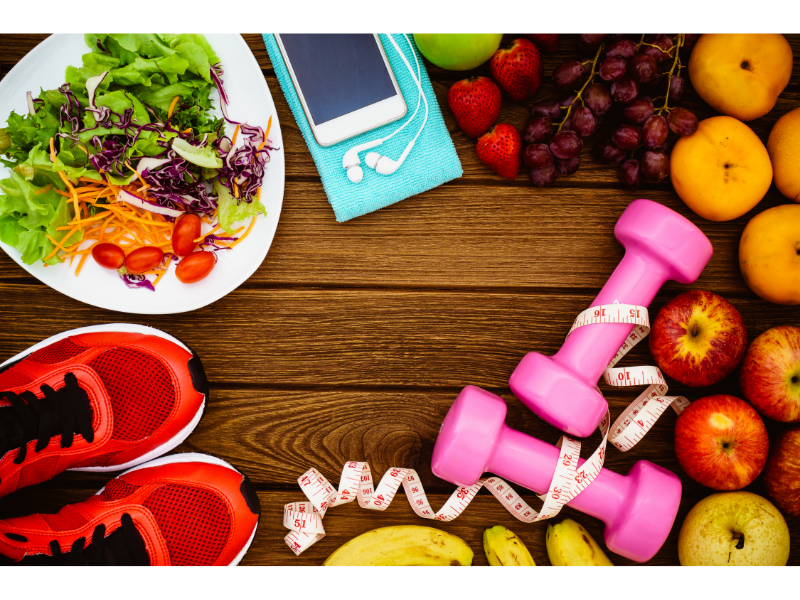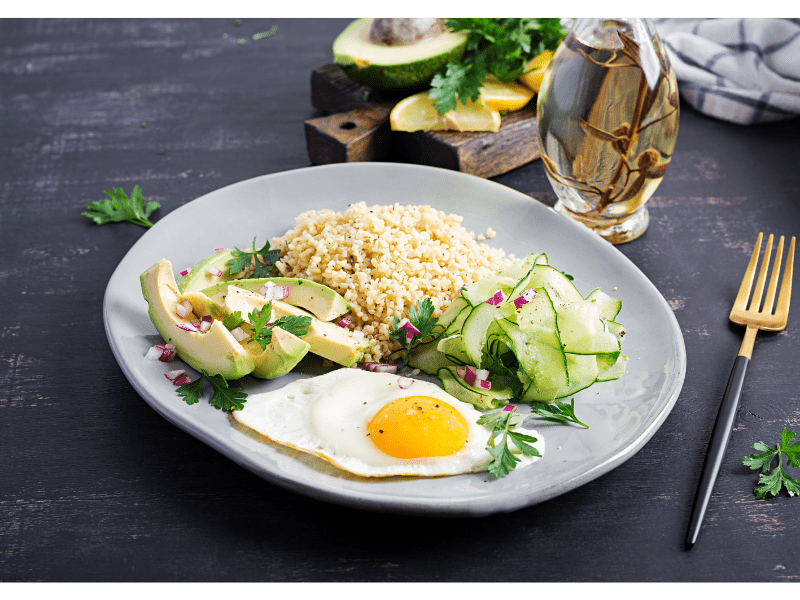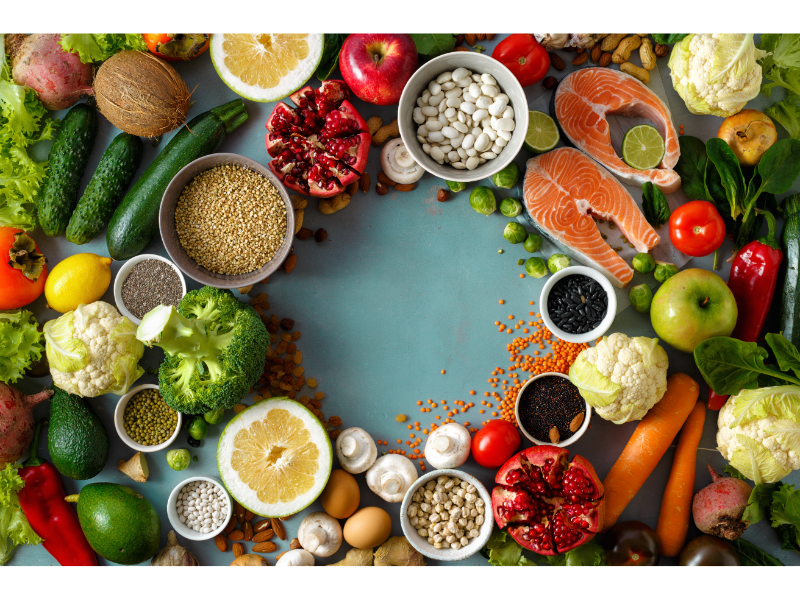Understanding the Importance of Meal Prep for Weight Loss
Meal prep has become a popular and effective strategy for individuals looking to achieve their weight loss goals. It involves planning and preparing meals in advance, typically for the week ahead. This method not only saves time and effort but also offers a range of benefits that can greatly support weight loss efforts.
When it comes to weight loss, meal prep plays a crucial role in helping individuals stay on track with their dietary goals. By taking the time to plan and prepare meals in advance, individuals can ensure that they have healthy, portion-controlled options readily available. This eliminates the need for impulsive food choices or relying on unhealthy takeout meals.
One of the key benefits of meal prepping for weight loss is portion control. By pre-measuring and portioning out meals, individuals can maintain better control over their calorie intake. This is especially important when trying to create a calorie deficit necessary for weight loss.
Additionally, meal prepping allows individuals to have greater control over the ingredients used in their meals. By selecting fresh produce, lean proteins, and whole grains, individuals can ensure that they are consuming nutrient-dense foods that support their weight loss goals.
Moreover, meal prepping promotes consistency in eating habits. When healthy meals are readily available throughout the week, it becomes easier to stick to a balanced eating plan without succumbing to temptations or resorting to unhealthy options.
Understanding the importance of meal prep for weight loss is essential for anyone looking to achieve sustainable results. The benefits of meal prepping include portion control, ingredient selection, and consistency in eating habits – all contributing factors towards successful weight management. So let’s dive deeper into these aspects and explore how meal prep can be an effective tool on your journey towards achieving your desired health and fitness goals.
Table of Contents
7 Steps to Meal Prep for Weight Loss
Step 1: Set Your Weight Loss Goals and Caloric Needs
Setting clear weight loss goals and determining your caloric needs are crucial steps in embarking on a successful weight loss journey. By understanding how many calories you need to consume in order to lose weight, you can create a realistic and achievable plan.
Firstly, it is important to establish your weight loss goals. This involves determining how much weight you want to lose and by what timeframe. It is recommended to set realistic and attainable goals that align with your overall health objectives.
Once you have established your weight loss goals, the next step is calculating your caloric needs. This involves determining the number of calories required for your body to maintain its current weight, also known as the maintenance calories. There are various formulas available online that can help you estimate this value based on factors such as age, gender, height, weight, and activity level.
To create a calorie deficit for weight loss, you will need to consume fewer calories than your maintenance level. A general rule of thumb is to aim for a deficit of 500-1000 calories per day in order to lose 1-2 pounds per week – a safe and sustainable rate of weight loss.
It’s important not to drastically reduce calorie intake below recommended levels as this can negatively impact your metabolism and overall health. Consulting with a registered dietitian or healthcare professional can provide personalized guidance on setting an appropriate calorie intake for your specific needs.
Step 2: Plan Your Meals and Create a Weekly Menu

Meal planning is an essential step in achieving weight loss goals. By carefully planning your meals and creating a weekly menu, you can ensure that you are making healthy choices and staying on track with your dietary needs. To start, gather a variety of healthy meal ideas for weight loss. Consider incorporating lean proteins, whole grains, fruits, vegetables, and healthy fats into your menu. Aim for a balance of nutrients and flavors to keep your meals enjoyable and satisfying.
Once you have gathered your meal ideas, it’s time to create a weekly menu. This involves mapping out what you will eat for each day of the week. Take into account any specific dietary requirements or preferences you may have. When planning your meals, consider portion sizes and calorie intake. Ensure that you are consuming the appropriate amount of calories for weight loss while still meeting your nutritional needs. You can use online resources or mobile apps to help track the nutritional content of the meals you plan.
Creating a weekly menu also allows for efficient grocery shopping. With a clear plan in place, you can make sure to purchase all the necessary ingredients ahead of time. This helps avoid last-minute unhealthy food choices or unnecessary trips to the store. By taking the time to plan your meals and create a weekly menu, you set yourself up for success in achieving weight loss goals. It provides structure, organization, and ensures that you have nutritious options readily available throughout the week.
Step 3: Make a Grocery List and Shop Smartly
When it comes to grocery shopping for weight loss and maintaining a healthy lifestyle, having a well-planned and smart grocery list is key. By following step 3 of this guide, you can ensure that you make informed choices and shop smartly for your weight management goals.
Creating a grocery list tailored to your weight loss journey can help you stay on track and avoid impulse purchases of unhealthy foods. Start by including plenty of fresh fruits and vegetables in your list, as they are low in calories and packed with essential nutrients. Opt for lean proteins such as chicken, fish, tofu, or beans to keep you feeling satisfied without adding excess calories.
In addition to focusing on nutritious options, it’s important to be mindful of portion sizes. Consider adding whole grains like quinoa or brown rice to your list as they provide fiber and help keep you full. Avoid sugary snacks and instead include healthier alternatives such as nuts or Greek yogurt.
Another tip for smart grocery shopping is to read food labels carefully. Look out for hidden sugars, unhealthy fats, or high sodium content in packaged foods. Choosing whole foods whenever possible will not only support your weight loss efforts but also contribute to overall better health.
By making a conscious effort to plan ahead and create a well-balanced grocery list, you can make healthier choices while shopping and set yourself up for success on your weight management journey.
Step 4: Preparing and Cooking Your Meals in Advance

Preparing and cooking meals in advance is a great way to save time and ensure that you have delicious and nutritious meals ready to go throughout the week. In this section, we will explore various meal preparation techniques, batch cooking tips, and time-saving cooking methods that can help streamline your meal planning process.
One of the key strategies in preparing meals in advance is batch cooking. This involves making larger quantities of food at once, which can then be portioned out and stored for later use. Batch cooking not only saves time but also allows you to take advantage of bulk buying discounts and reduces food waste.
To make the most out of batch cooking, it’s important to plan your meals ahead of time. This includes deciding on the recipes you want to make, creating a shopping list, and organizing your ingredients. By having a clear plan in place, you can efficiently prepare multiple dishes at once without feeling overwhelmed.
Another time-saving technique when it comes to meal preparation is utilizing time-saving cooking methods. For example, using a slow cooker or instant pot can significantly reduce hands-on cooking time while still producing flavorful results. These appliances allow you to simply add your ingredients, set the timer, and let them do the work while you focus on other tasks.
Additionally, consider prepping ingredients in advance such as chopping vegetables or marinating meats. This way, when it’s time to cook your meals during the week, you’ll have everything ready to go without spending extra time on prep work.
In this section, we will delve deeper into these meal preparation techniques as well as provide practical tips for successful batch cooking and utilizing time-saving cooking methods. By incorporating these strategies into your routine, you’ll be able to enjoy homemade meals with less stress and more free time for other activities.
Step 5: Portion Control and Proper Storage of Prepared Meals
One of the key factors in achieving weight loss goals is controlling portion sizes. By being mindful of serving sizes, individuals can ensure they are consuming the right amount of calories and nutrients for their needs. This step focuses on portion control techniques to support weight loss efforts.
To begin with, it is important to understand recommended serving sizes for different food groups. This information can be found on nutrition labels or through reputable sources such as dietary guidelines. Measuring cups, food scales, and portion control plates can be helpful tools in accurately determining appropriate serving sizes.
Proper storage of prepared meals is equally crucial to maintain freshness and quality. Here are some tips to ensure your meals stay delicious and safe:
- Refrigeration: Store prepared meals promptly in the refrigerator at a temperature below 40°F (4°C) to prevent bacterial growth. Divide larger portions into smaller containers for easier storage.
- Freezing: If you are not planning to consume the meals within a few days, freezing them can help extend their shelf life. Use freezer-safe containers or bags and label them with the date for easy tracking.
- Meal prepping: Consider dividing your prepared meals into individual portions before storing them in order to avoid unnecessary reheating or thawing of larger quantities.
- Proper packaging: Go for airtight containers that will help retain freshness and prevent odors from permeating other foods in the refrigerator or freezer.
- Reheating: When reheating stored meals, ensure they reach an internal temperature of 165°F (74°C) to kill any potential bacteria that may have grown during storage.
By implementing proper portion control techniques and following appropriate storage practices, individuals can effectively manage their calorie intake while maintaining the quality and safety of their prepared meals.
Step 6: Incorporate Variety and Balance in Your Meal Prep

Incorporating variety and balance in your meal prep is crucial for achieving your weight-loss goals while ensuring optimal nutrition. By diversifying your meals, you not only prevent monotony but also provide your body with a wide range of essential nutrients.
When it comes to dietary variety in weight-loss meal prep, consider including a mix of fruits, vegetables, whole grains, lean proteins, and healthy fats. This will not only add flavor and color to your meals but also provide a wide array of vitamins, minerals, and antioxidants.
To achieve balanced nutrition in your prepared meals, aim for a combination of macronutrients – carbohydrates, proteins, and fats – in appropriate proportions. This ensures that you are fueling your body with the right nutrients while keeping you satisfied throughout the day.
Including different types of foods from each food group can help you achieve this balance. For example, opt for whole grain options like quinoa or brown rice as your carbohydrate source; incorporate lean proteins such as chicken breast or tofu; and include healthy fats like avocado or olive oil.
Remember to experiment with different flavors and cooking techniques to keep things interesting. Incorporating herbs, spices, and marinades can add depth and excitement to your meals without compromising on nutrition.
By incorporating variety and balance into your meal prep routine, you can enjoy a diverse range of flavors while providing your body with the nourishment it needs for successful weight loss.
Step 7: Stay Consistent and Track Your Progress
Consistency is key when it comes to achieving your goals and tracking your progress. In step 7 of your journey, it is important to stay consistent with your efforts and continually monitor your progress.
Tracking your progress allows you to see how far you have come and identify areas for improvement. It helps you stay motivated and focused on reaching your desired outcome. Whether you are working towards a personal goal or a professional milestone, consistent tracking allows you to make necessary adjustments along the way.
There are various methods you can employ to track your progress effectively. One common approach is setting specific targets or milestones that can be measured quantitatively. This could include things like sales numbers, website traffic, or customer satisfaction ratings.
In addition to quantitative measures, it is also important to track qualitative aspects of your progress. This could involve gathering feedback from customers or clients, conducting surveys or interviews, or even keeping a journal of personal reflections on your journey.
Technology can be a valuable tool in tracking progress as well. There are numerous apps and software available that can help automate data collection and provide visual representations of your progress over time.
Remember that staying consistent does not mean being rigid. It is important to regularly assess and adjust your approach as needed based on the insights gained from tracking your progress. By staying committed and adaptable, you will increase the likelihood of achieving success in reaching your goals.
Embrace Meal Prep for Weight Loss and Achieve Your Desired Results
In conclusion, embracing meal prep for weight loss can greatly contribute to achieving your desired results. The benefits of meal planning for weight loss are numerous and undeniable.
First and foremost, meal prep allows you to have better control over your food choices and portion sizes. By planning and preparing your meals in advance, you can ensure that you are consuming balanced and nutritious meals that align with your weight loss goals. This eliminates the temptation to make impulsive and unhealthy food choices when hunger strikes.
Additionally, meal prepping saves time and reduces stress. By dedicating a specific time each week to plan and prepare your meals, you can avoid the daily hassle of deciding what to eat or resorting to convenient but unhealthy options. This not only helps you stay on track with your weight loss journey but also frees up valuable time for other activities.
Moreover, meal prepping promotes consistency in your eating habits. When you have pre-portioned meals readily available, it becomes easier to stick to a structured eating schedule. Consistency is key when it comes to weight loss as it helps regulate your metabolism and prevents overeating.
Lastly, meal prep encourages mindful eating. By taking the time to plan out your meals in advance, you become more aware of what goes into each dish. This mindfulness translates into being more conscious of portion sizes, ingredients used, and overall nutritional value.
In summary, embracing meal prep for weight loss offers a multitude of benefits including better control over food choices, time-saving convenience, consistent eating habits, and promoting mindful eating. By incorporating this practice into your lifestyle, you can set yourself up for success on your weight loss journey while enjoying.
Also Read: A Beginner’s Guide To Healthy Meal Plans For Weight Loss


5 thoughts on “7 Steps to Efficient Meal Prep for Weight Loss: A Comprehensive Guide to Organizing Nutritious Meals”